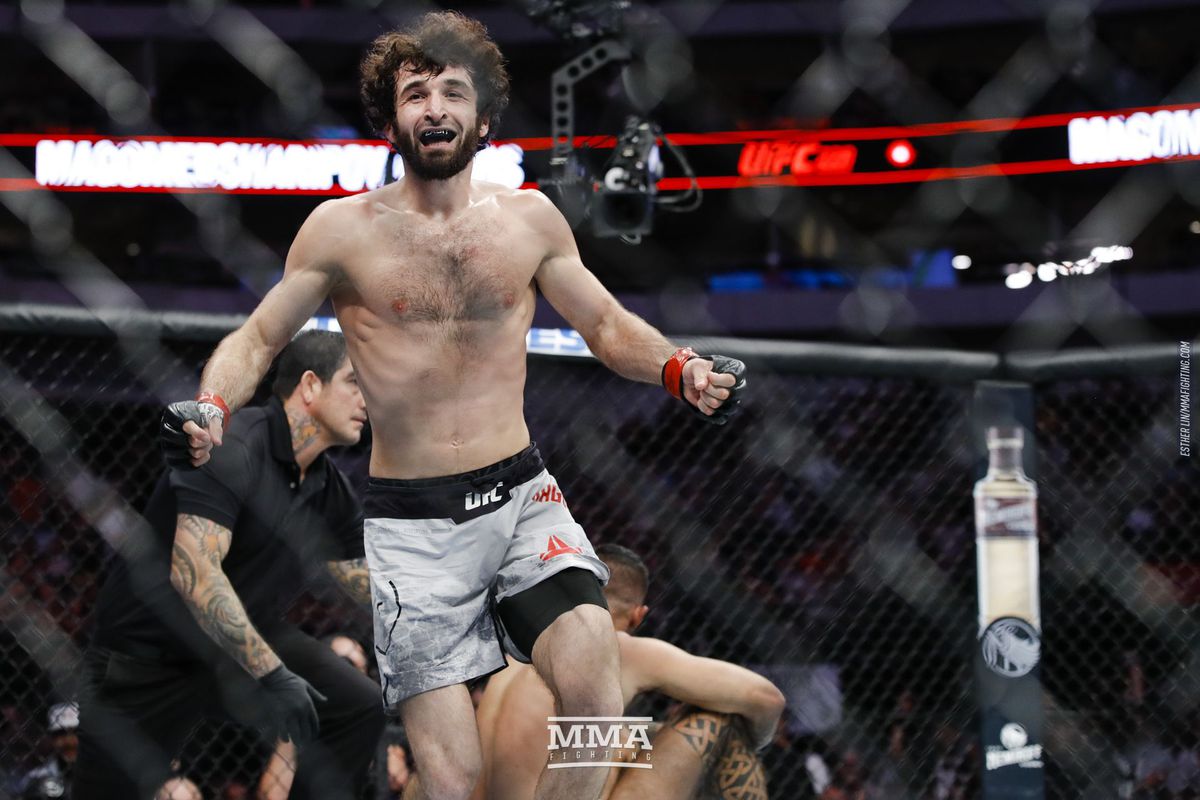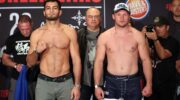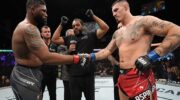As much as most MMA fans love a good debate, there’s one question that’s typically more haunting than stimulating: What could have been?
It’s a question that has to be asked in the wake of Zabit Magomedsharipov announcing his retirement last week as he laid down his gloves with a perfect 6-0 UFC record and all the makings of a can’t-miss featherweight contender. At 31, there were plenty of big fights ahead for Magomedsharipov. He was so close to winning a title bout. Could he have won it all? Could he have been a dominating champion?
MMA has a lot of hypotheticals. In this roundtable discussion, Shaun Al-Shatti and Alexander K. Lee and Steven Marrocco discuss four possible scenarios that could have a huge impact on the world. They also talk about how complex they are and what level of potential there is.
What are your favorite MMA thought-provoking what-ifs and why? Join the conversation by jumping into the comments.
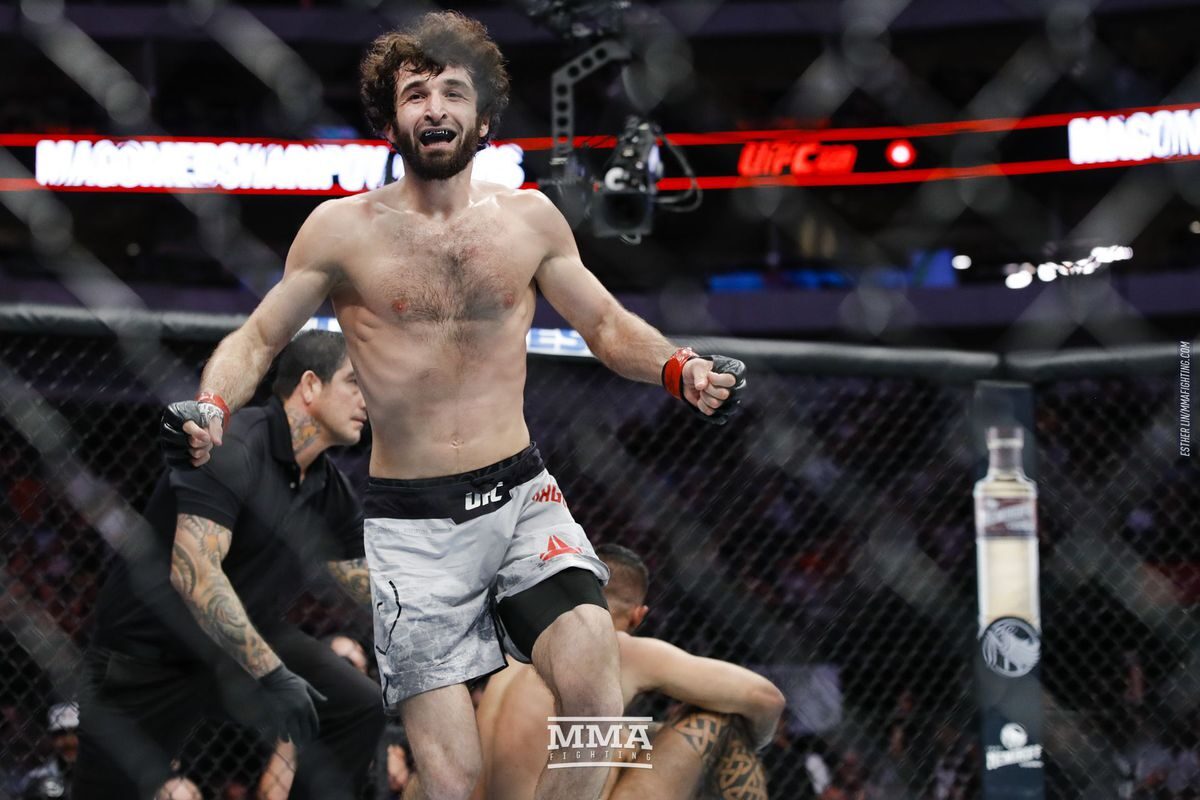
Zabit Magomedsharipov
Lee: Zabit Magomedsharipov was following the elite prospect path to a tee.
He had previously beaten high-quality competition, and was awarded a Russian title. He debuted in the big show with two submission wins against strong competition, 31-fight veteran Mike Santiago and World Series of Fighting bantamweight contender Sheymon Moraes. After winning a fight against Kyle Bochniak, he picked up another submission and won solid decisions victories over Jeremy Stephens (his third consecutive fight night bonus).
He wasn’t the perfect competitor. There were signs that his gas tank was not up to par in his victories over Kattar and Bochniak, but they also seemed like an issue that could easily be addressed. Magomedsharipov’s profile was just so intriguing: Long and lanky for a 145er, creative striking, and an airtight ground game. If he wasn’t a surefire world champion, he was certainly an odds-on favorite to at least challenge for a UFC title.
Magomedsharipov decided to retire because of real life, the many complications in the fight sport, and it is true that he has decided to leave cagefighting behind and pursue medicine. That’s as smooth an exit from this mad business as one can get. If his body had cooperated and he’d been able to book a fight sometime in the past two years, would it have changed his mind? We’ll never know.
I would love to have seen Max Holloway in that room with Yair Rodriguez. And Max Holloway. And Alexander Volkanovski. Although it is possible that all three perennial contenders could have dealt with him easily, it would be disappointing for fans to not have the opportunity.
Martin: Touted as one of the best prospects to sign with the UFC in recent years, Magomedsharipov appeared to have the perfect pedigree to one day become a champion.
Magomedsharipov is a consummate martial artist who has a background both in sanda, wrestling and Wushu. He was originally from Dagestan, which is a region that’s well-known for its ability to produce world champion fighters. His long, lanky frame made him a tough out for shorter featherweights and Magomedsharipov was also incredibly creative inside the cage as he came after opponents with nasty strikes and a slick submission arsenal.
He capped off a 6-0 run with the UFC after picking up back-to-back wins over Kattar and Stephens and it appeared he was ready for title contention with perhaps just one more victory.
Sadly, that opportunity never came after a fight between Magomedsharipov and Yair Rodriguez failed to materialize despite several attempts to make it happen. Add to that, Magomedsharipov was dealing with health issues of his own that continuously pushed back his return to action.
In the end, the 31-year-old decided to call it a career without ever competing for UFC gold, much less getting the chance to treat fans to fights against the likes of Holloway, Volkanovski, Ortega, or the aforementioned Rodriguez.
Magomedsharipov was a potential champion. He looked strong enough to compete with featherweight’s best. Now, after six fights in the UFC and an 18-1 record overall, Magomedsharipov is retired and we may never really know how good he could have been.
The only ones who may be content with that are featherweights, who won’t face him after he leaves.
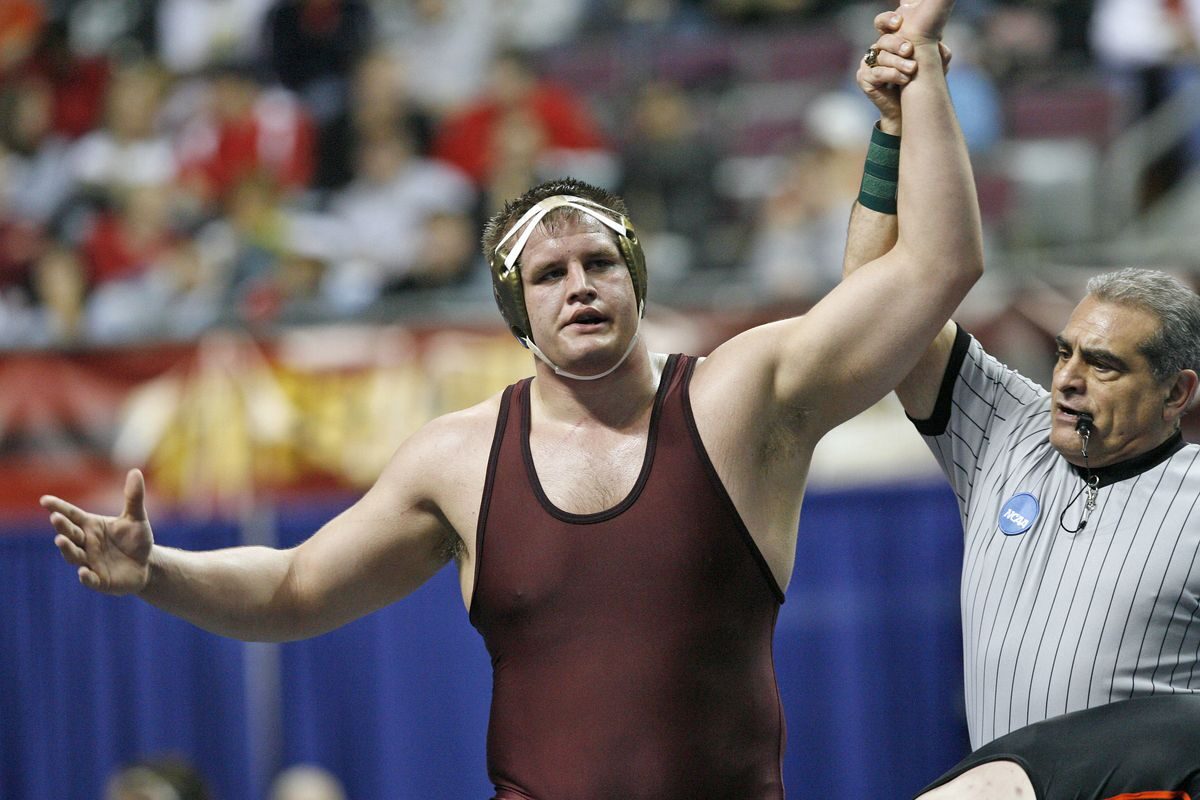
Cole Konrad
Al-Shatti: The wrestling chops of a two-time NCAA champion? Check. Check out the athleticism and overall strength of the Big Ten Male Athlete. Check. The prodigious potential of a 6-foot-5 monster who regularly pushed Prime Brock Lesnar to his limits, captured the Bellator heavyweight title in his first year of active competition, and was branded by a training partner as “Cain Velasquez at 300 pounds?” Check, check, and check.
Yes, newer MMA fans may not be familiar with the name Cole Konrad, but there’s a reason “The Polar Bear” was seen as one of the sport’s original what-ifs.
Because Konrad is a great guy. He didn’t even get started.
Konrad had a Hall of Fame run as a four-time All-American wrestler at the University of Minnesota, then made the leap to MMA in 2010 only at the behest of his superstar friend, serving as Lesnar’s primary training partner at a time when Lesnar was legitimately one of the best heavyweights in the world. And right away, he had the goods. Konrad went 7-0 in his first year as an unarmed combatant and had the inaugural Bellator heavyweight strap sitting on his mantelpiece before the year was over. And yet… that was pretty much the end.
Konrad fought only twice more, before his career ended. He became a commodities broker in the dairy sector. If you are skeptical about the value of fighter pay, then look to the legendary heavyweight who chose instead to peddle milk and other whey protein just as he was finding his feet. Konrad has effectively been a ghost ever since (though I miiiight just have a catch-up story with him coming soon). The Polar Bear, with his athletic prowess and his obvious potential in MMA over three years, will be forever remembered as the man who could have been.
Marrocco: Yeah, the milk thing is really what gets me about Konrad. Get knocked out, suffer a severe injury, or maybe just have an accurate attack of conscience and/or good sense, but…milk? What is milk, as a commodity. That’s just something you never see in MMA, as evidenced by the fact that it hasn’t happened since. (I may have Googled it at the time to see if, in fact, it was a thing.) That’s not some statement about Konrad’s character, the way I see it. Konrad was an outstanding wrestler who was also a strong presence in the cage. He also wasn’t the most exciting fighter to watch. He was just a regular guy who showed up to do his job. Unassuming, unpretentious, and altogether effective — one of the many wrestlers who’ve cycled through this sport with the philosophy that it’s the world’s job to stop them from doing what they’re going to do rather than doing something more “entertaining.”
I don’t think Konrad could have done anything but what he did at his peak. He was the Bellator champion during the early days of the promotion. If anything, it would have been interesting to see how far he could take his skill set. Bellator’s heavyweight division certainly hasn’t evolved leaps and bounds from where it was when he left. Maybe he’d still be champ. He was, in truth, always a bit under Lesnar, just like Chris Tuchscherer or the other guys from Team Death Clutch/Minnesota Martial Arts. No wonder, the big fella had a tendency to do that.
Could he have reached Lesnar’s competitive heights? Probably not. He might have had a successful run. It’s just that he was able to see the bigger picture and decide to leave the sport for a better job that would be better for him long-term.
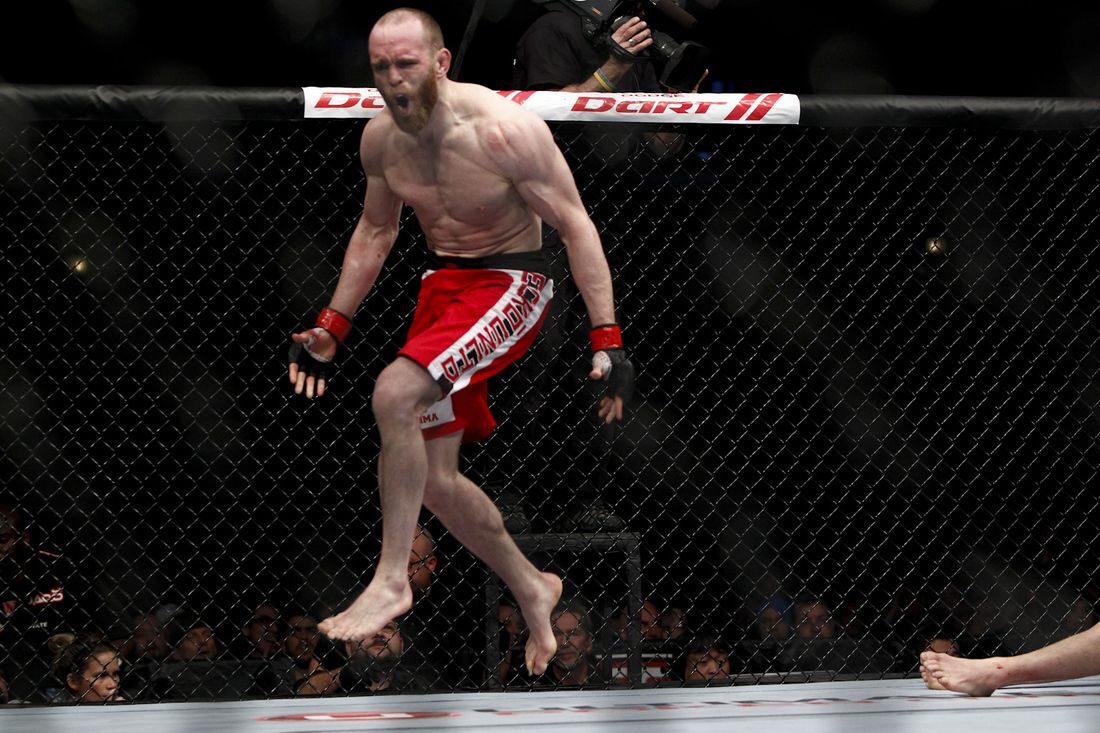
T.J. Grant
Marrocco: T.J. Grant didn’t start out as anything special in the UFC. After a 13-2 run on the Canadian circuit, he earned a contract and stalled against solid talent in the welterweight division: Dong Hyun Kim, future champ Johny Hendricks and Ricardo Almeida. The Halifax native made the decision to change to lightweight after losing weight. He has now won five consecutive fights in the Octagon. He seemed more promising than ever, and his fighting skills became a multifaceted threat. By the time he defeated two-time title challenger Gray Maynard in a signature performance, he was the contender-apparent and was booked to fight champ Benson Henderson at UFC 164.
In preparing for his title fight, Grant suffered a concussion during jiu-jitsu training. Anthony Pettis replaced Grant, still holding Henderson’s number. Then? Grant seemed lost in his career. His concussion symptoms continued to flare up and he was unable to fight “Showtime” for the title. Years went by. Grant fell further off the radar. In 2015, he revealed that mounting debt and a new family had realigned his priorities, and he indicated another run wasn’t in the cards.
Grant’s concussion problems and subsequent financial troubles brought into focus the dangers UFC fighters face in training camp. Grant was poised to win the UFC title and appeared to be just steps from becoming a champ. Grant did this at an era when the sport was just beginning its boom years. His story showed that even the most successful fighters can still be unable to skate on thin ice and could disappear at any time.
Lee: This one hurts.
Grant’s sudden ascension up the lightweight ranks coincided with my own peaking interest not just in following MMA, but in considering that it could be a field I could work in even if it was just blogging part time. This was an exciting time to be Canadian. Georges St-Pierre was still dominating, Rory MacDonald was on the come-up, and now we had a guy to root for in the deepest division in the UFC.
It wasn’t clear what Grant’s ceiling was, but when he ran through Maynard in May 2013 in a little over two minutes it was raised considerably. Maynard had just fought two times for the lightweight title, and Grant did that ?.
Even though his own title shot was still to come, he returned to The North a conquering hero, showing up at a fan fest ahead of UFC 161 in Winnipeg for an open Q&A. I was at the front of the line asking whether he thought capturing UFC gold could lead to him stealing some shine from his fellow Haligonian Sidney Crosby. It was the first time I’d ever posed a question to a professional fighter. (This is also where I had the chance to ask Sarah Kaufman about the absurd and unforgettable Strikeforce promo for her fight with Ronda Rousey, a shoot that just so happened to involve the legendary Esther Lin).
Grant lost his chance at the championship less than one month later.
This kind of change is normal in UFC, even back when it was less chaotic. You just assumed that he would get the chance to fight Henderson after Pettis’ rematch. He never did. He never fought again. It wasn’t his victory over Maynard that was the end. It was the end.
Over the years, as reports came out that Grant was suffering from concussion issues that would suspend his return indefinitely, I was forced to face the mortality of these fighters for the first time. I knew MMA was dangerous, but these guys and gals were superheroes. Everything was supposed to be just a flesh wound. An injury in practice? Rub some dirt on it and get back out there. You’re a world title contender!
The Canadian MMA scene hasn’t been the same since. Although Grant’s absence is not a major reason for the scene’s decline, it’s hard to argue otherwise. Even if he’d just lost to Henderson and fallen back to the middle of the pack, it would have been a less tragic outcome. Seeing Grant’s career cut short is as painful as any premature ending we’ve seen because we actually have a firm idea of how far he could have gone. It was only cruelly moved at the very last moment.
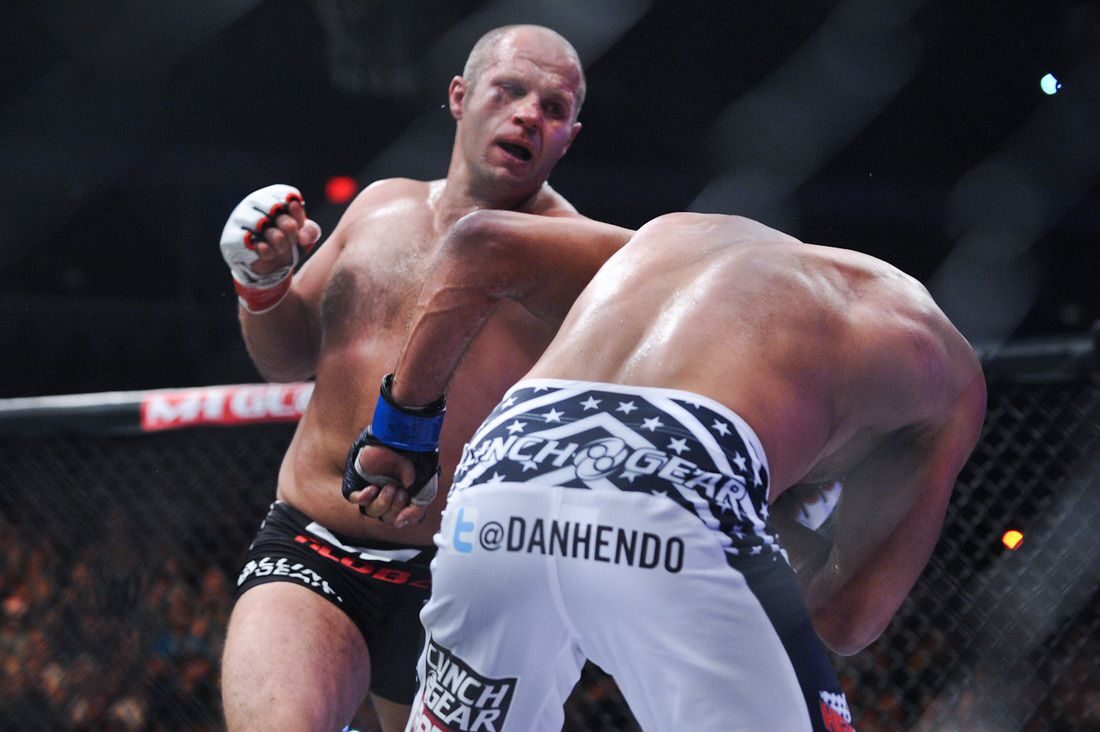
Fedor Emelianenko and the UFC
Martin: There’s no bigger name in the category of “the one who got away” than former PRIDE heavyweight champion Fedor Emelianenko and the UFC’s failed pursuit to sign him.
During an unprecedented 28-fight unbeaten streak, Emelianenko was the best heavyweight in the sport by a wide margin as he decimated his competition again and again, usually in spectacular fashion whenever he set foot in the ring. While the UFC constantly struggled to build a viable heavyweight division around more than two or three fighters at most, Emelianenko was dominating the best fighters from two different generations with multiple wins over the likes of Antonio Rodrigo Nogueira, Mark Coleman and Mirko Cro Cop in what was arguably the most highly anticipated heavyweight fight of the early 2000s.
Unfortunately, Emelianenko never had much interest in signing with the UFC even after the then-Zuffa-owned company bought out PRIDE, which resulted in many of the top fighters changing promotions. Emelianenko signed with Affliction instead, where he defeated Tim Sylvia (former UFC champion) and Andrei Arlovski (former UFC champion). He then spent a short time in Strikeforce, where he ended his unbeaten streak.
Despite a few losses, Emelianenko still held the prize UFC President Dana White longed to win. He made one last attempt to get Emelianenko signed for an epic fight with Brock Lesnar at Dallas Cowboys Stadium. White has often told the story of how he flew to a private island just trying to get a deal done, but Emelianenko and his team balked at the offer before the two sides split again.
It’s impossible to know what Emelianenko might have done if he had gone to UFC at the peak of his career, but it is hard to believe he would not have been the UFC’s heavyweight champion. When he was suffering from PRIDE, Emelianenko was leaps ahead of many of his UFC counterparts.
Of course, Emelianenko also stands as one of the only fighters in history to tell the UFC to kick rocks and yet still have his legacy cemented as arguably the greatest heavyweight to ever lace up a pair of MMA gloves. This is his greatest achievement.
Al-Shatti: Here’s the list of UFC heavyweight champions from 2003-09: Tim Sylvia (x2), Andrei Arlovski, Frank Mir, Randy Couture, and Brock Lesnar.
Now ask anyone around back then to pick out the predominant heavyweight of the era.
( I’ll tell you: it wasn’t one of these names. )
For many of us old folks, there will never be a more special time in MMA history than when an unassuming man from the small town of Stary Oskol was the most dangerous unarmed combatant alive. That the UFC and Fedor Emelianenko failed over and over again to reconcile their differences remains one of the sport’s great shames, because while Affliction and Strikeforce tried their hardest to do a legend justice, the arrival of the stone-cold Russian in the biggest promotion in the world would’ve forever been the seminal moment MMA deserved.
